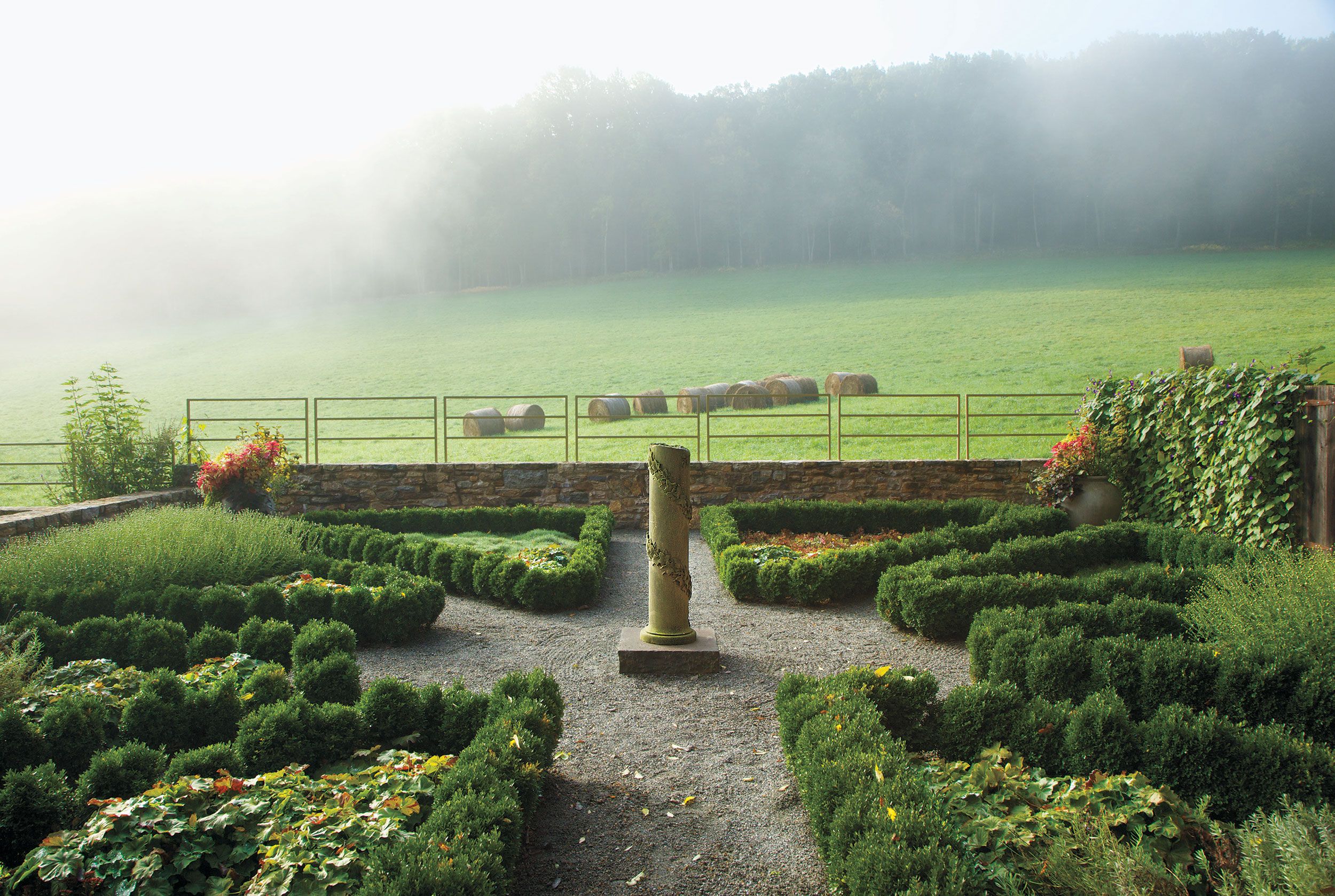
WWW.ELLEDECOR.COM
From the Archive: 100 Acres of Wild New Jersey Fields Are Transformed into a Veritable Eden
This article originally appeared in the October 2011 issue of ELLE DECOR. For more stories from our archive, subscribe to ELLE DECOR All Access.Janet Mavec knows a thing or two about beauty. An authority on antique jewelry, she once ran a jewelry shop on Madison Avenue and for a while designed her own line, including a collection with garden-themed motifs. I understand the concepts of beauty and design, she says, and Im able to focus on things at a microscopic level. But in 1997, she married Wayne Nordberg and moved to his New Jersey farm, where she was confronted with nearly 100 acres of land in need of taming. I knew I had to have help, she says. Andre BaranowskiYellow irises and daffodils by the pond.The property was a hodgepodge of buildings; trees and plantings had grown up in every direction. A hardscrabble German farmer had constructed a stone cottage on the property around 1800; subsequent landowners had left behind a Sears kit house and two barns. Nordberg, who runs a money-management firm in Manhattan, grew up nearby and had lived on the farm since the 1980s; he had built a rambling, contemporary wood house when his first wife was alive. Mavec found herself trying to figure out a way to pull together the old and new buildings and the ragtag fields, fruit orchards, and gardens. Mavec is a gardening enthusiast who has served on the board of Wave Hill, a lush public garden in the Bronx, and is now on the board of the Horticultural Society of New York. She wanted her own property to reflect a sense of continuity with the landscape as it existed for generations. At one point she even researched the life of a famous former owner, Harriet Stratemeyer Adams, a childrens book writer who oversaw the syndicate that produced the Nancy Drew and Hardy Boys series. Adams had moved to the farm in the late 1930s and, for the next half century, wrote in the stone cottage and gardened on the property. Mavec dug through old magazines and newspapers for period descriptions or photographs of the grounds. Frustratingly, nothing turned up. Andre BaranowskiAutumn joy sedum, amsonia, hosta, dahlias, and a banana tree are among the plantings in the vegetable garden. In 2000, Mavec discovered Guy Cooper and Gordon Taylors book Mirrors of Paradise: The Gardens of Fernando Caruncho. Drawn to Carunchos love of ancient Greek philosophy and classical garden design, she and Nordberg visited him at his house outside Madrid and invited him to take a look at their gardens back in the states. Carunchos visit the next year led to only his second American commission.I think the simplicity of the landscape is what gives it its own invisible being.Rather than attempting a historical restoration, Caruncho conjured his own mythical history of the landscape. When I arrived at Janet and Waynes property, I had the perception of reaching a little medieval town in the middle of the forest, he says. To bring that imagined town to fruition, he didnt relocate the older structures or erect new ones; instead, he moved the land. The geometry of the existing architecture was incomplete, he says. He began with some drastic editing: He altered grades, removed ledges and a parking area; he hauled away truckloads of trees, bushes, and flower beds. Then he redesigned the driveway, created paths between the buildings, and constructed a series of fieldstone walls (which Mavec calls cheap Richard Serras), which not only gave shape to her kitchen gardens but also created a sense of enclosure and protection, like the walls of an ancient village.The final touch was the placement of an elliptical reflecting pool in front of the original stone cottage. The pool echoes the contours of the natural pond nearby, assuming a sculptural presence that contrasts with the strict geometry of the new house. Andre BaranowskiThe vegetable parterre contains carrots, Mexican cucumbers, celery, parsnips, lemon verbena, and 27 varieties of tomatoes; the fieldstone used for the walls was found on the property. I think the simplicity of the landscape is what gives it its own invisible being, says Caruncho. In Spanish we call it duendea hard-to-define word that roughly translates to inspiration or soul. In what Mirrors of Paradise coauthor Taylor calls a typically exquisite Caruncho move, the garden designer brilliantly and simply moved back the forest on the rise of the hill at the back of the new house, which had previously been cluttered with trees. What remains is an open field shaped into a loose ellipse. Mavec compares it to the colonnades that form an oval in St. Peters Square in Rome; at the same time, this back field acts as a firebreak. Caruncho may be a classicist, but he never lets practical considerations out of sight.Tour the Misty Grounds of This New Jersey GardenNordberg, who had always looked at the farm as a working environment, was initially skeptical of Carunchos grand plans. He didnt want a formal estate or an art installation. Now hes a total convert, says Mavec. We love working together outdoors. We have lunch in the vegetable garden, eating the foods weve grown. Well take a walk around the back field, and if we have houseguests, we might have a drink up there. One of the barns is used for celebrations and events, including an annual cider party. Mavec says she fusses and plants and plays with the vegetables and flowers on a weekly basis. Fernando created the framework of the garden but left the details for us to fill in. Each spring I replant the vegetable garden, which for me is like getting the chance to redecorate. This story originally appeared in the October 2011 issue of ELLE DECOR.
0 Comments
0 Shares
118 Views


